Integrating Atomic
This guide is designed to help technical and product stakeholders get up to speed with Atomic quickly. It briefly introduces the core concepts of Atomic from the perspective of integration but is not a comprehensive guide.
Atomic enables you to:
- Rapidly extend the capability of existing apps by providing a smarter way to design and ship low-code app functionality.
- Proactively engage your customers in a secure and compliant way. Improve response rates directly inside your mobile and web apps.
- Deliver highly personalized in-app experiences adapted to individual customer context and behavior.
Where Atomic fits in your product and data architecture
Atomic SDKs are installed into your mobile and web client applications. They create dynamic surfaces within your app, which fetch and display native messages (cards) from the Atomic platform, as well as communicate with your apps.
Atomic’s platform generates action cards and push notifications. Your custom and cloud systems interact with the platform via API and Webhooks. Your team interacts with the platform through our browser based workbench.
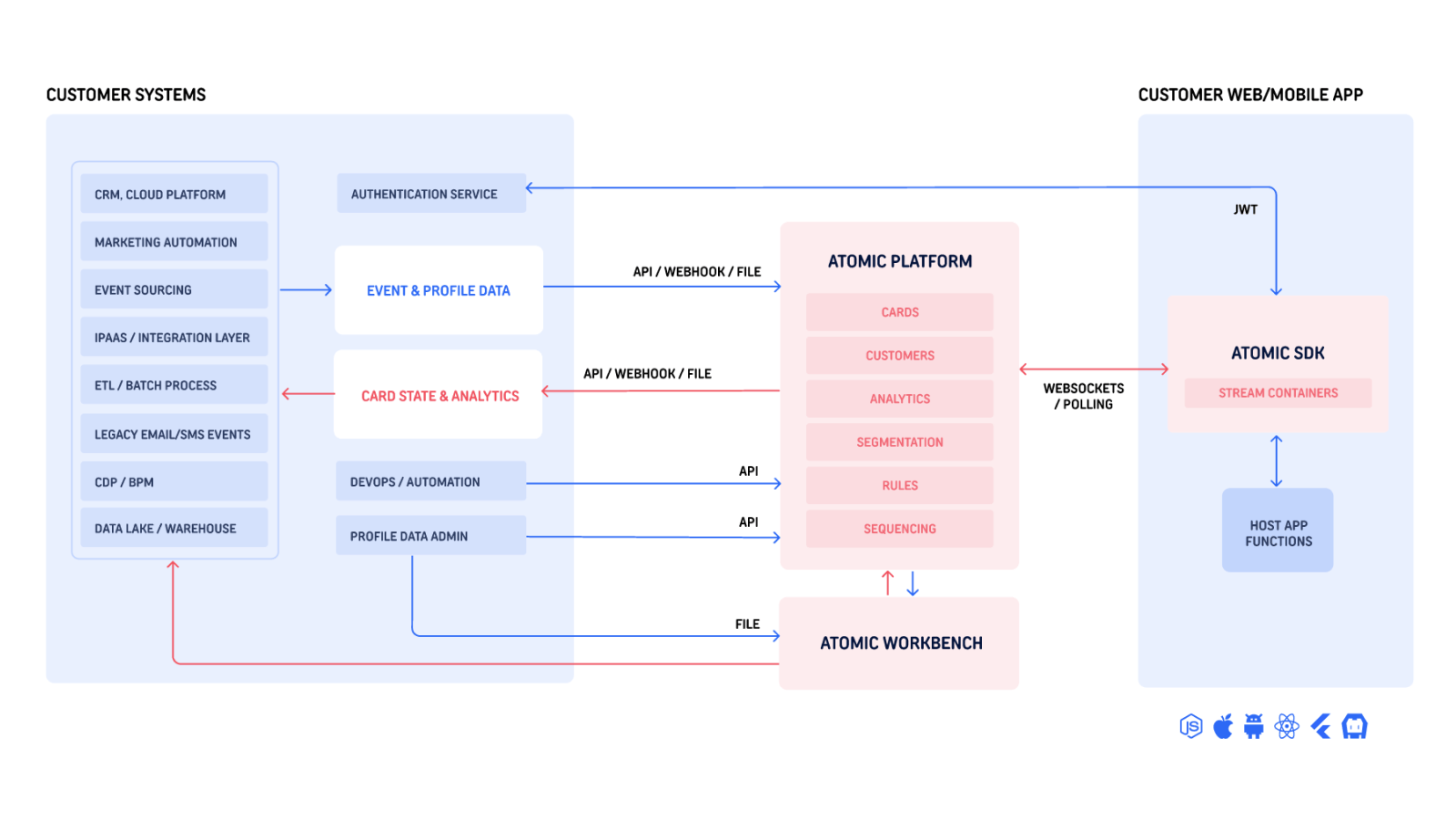
Atomic SDKs are installed into your mobile and web client applications
Atomic offers native mobile SDKs for iOS, Android, Flutter, React Native, Cordova and a Javascript SDK for web apps.
Basic installation is trivial with out-of-the-box layouts and behavior, but Atomic SDKs also support extensive integration flexibility.
Boilerplate apps are available for each SDK, and we are standing by help your team test, learn and deploy Atomic.
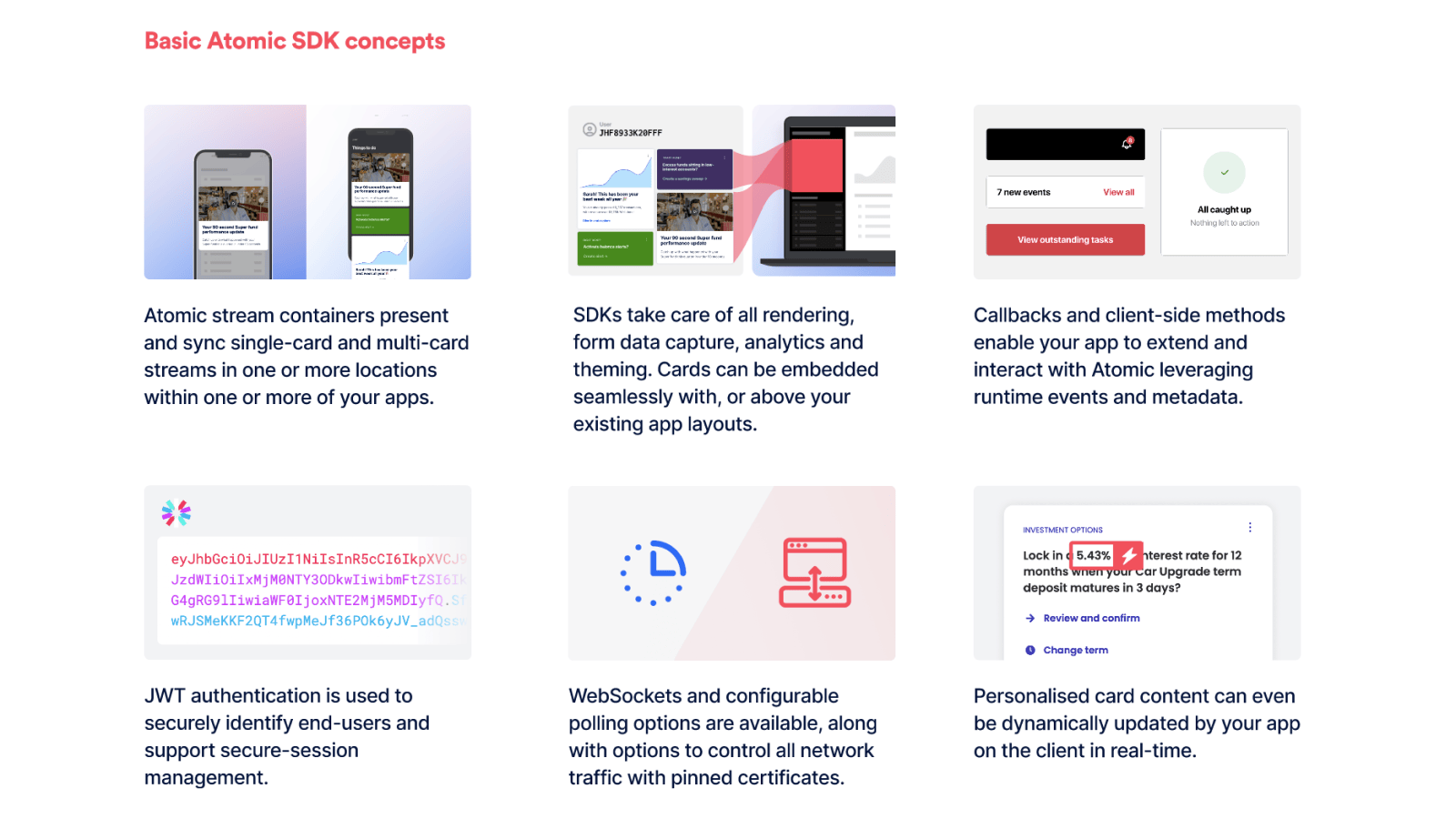
Atomic’s platform generates action cards and push notifications
Atomic supports multiple data flow scenarios. You can create and send batches of targeted Atomic cards with simple file uploads, build simple, or advanced data flows using our APIs and webhooks. Connect Atomic to existing cloud and business applications reflecting use-case scenarios in your organization.
You can send data and trigger events to Atomic directly from your client-side applications too.
Atomic also offers a powerful built-in customer segmentation and orchestration capability.
A good place to learn about how Atomic creates and sends in-app cards and push notifications is in the Action Flows overview.
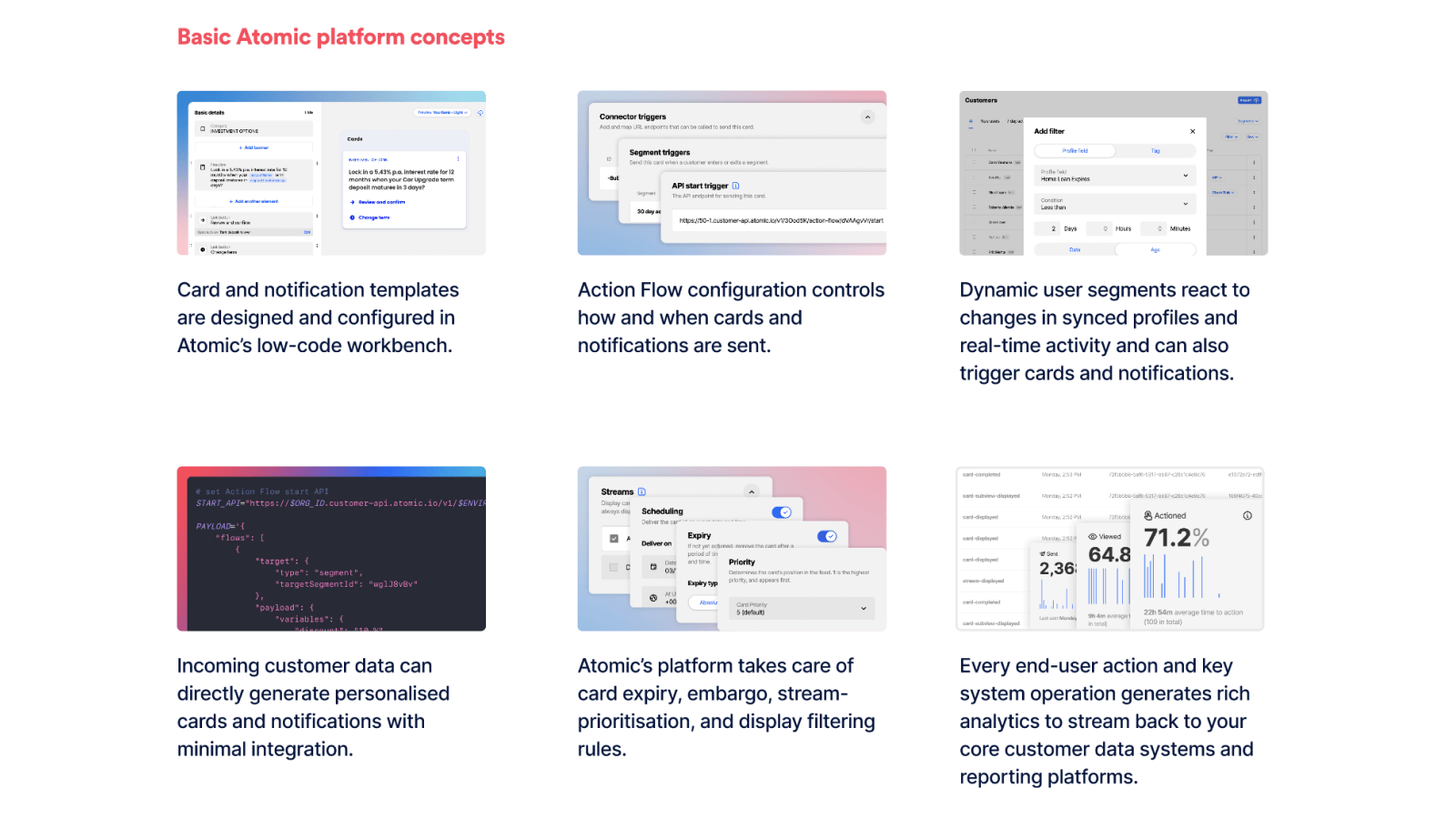
Common Atomic stream container implementations
Atomic stream containers embed into, or above your existing layouts. These containers can be extensively customized, but most customers start with one or two basic embedded containers, plus an overlaid modal-style container reserved for critical updates.
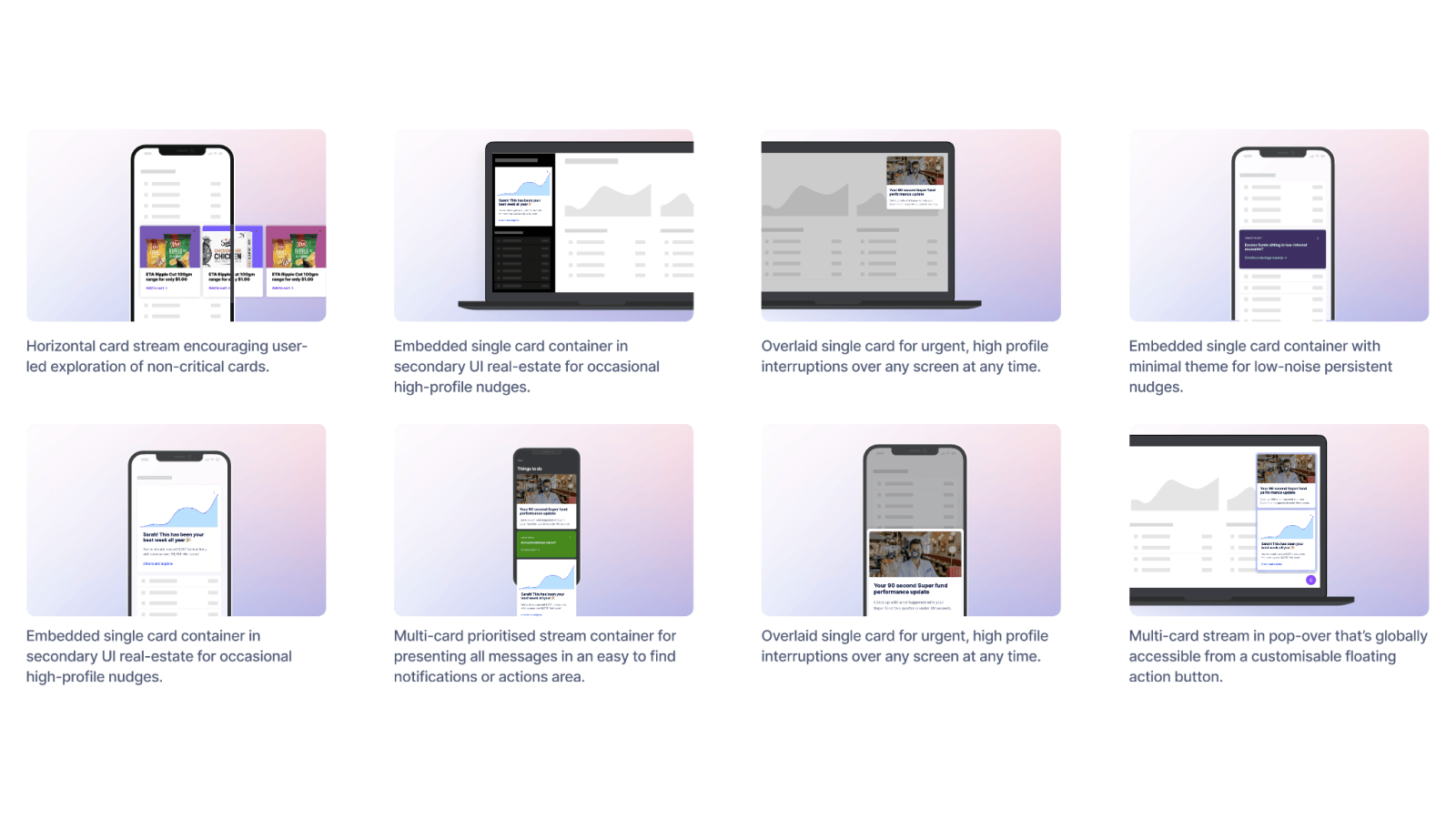
How your systems can trigger Action Cards
Atomic customers typically already have internal or cloud systems that can trigger the creation of Action Cards through:
- Event streaming: Business events can be streamed to the Atomic Platform API as they happen.
- Batching: Events can be bundled into batches and sent to the API in bulk or uploaded directly to the workbench.
The Atomic platform enables customers to leverage more than one integration pattern simultaneously and seamlessly evolve data integrations over time.
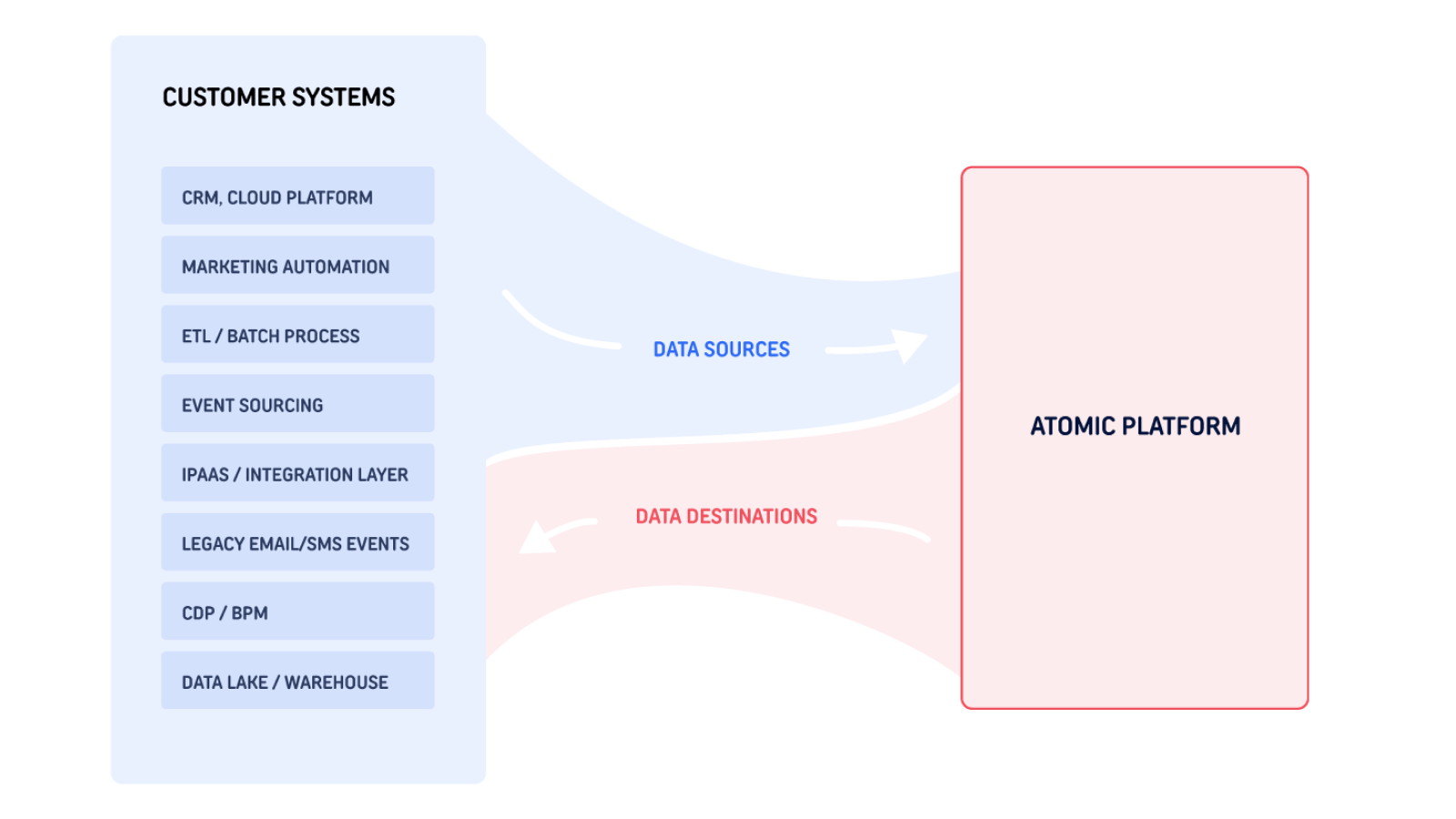
Extend your data integrations as your Atomic implementation scales
Most customers start with use cases that can be delivered with existing data, and minimal automation and evolve over time to implement new and advanced streaming data sources as required. Atomic unifies data from all incoming integration methods and fully supports a phased implementation where required.
Listed below are the most common trigger scenarios.
Manual triggers
Select a set of customers from the Atomic workbench, or upload a batch file, to trigger rapid customer communications. Perfect for situations where no automation exists or urgency requires fast turnaround and response times, e.g. outages, one-off events, urgent updates.
Upstream event triggers
Simple real-time trigger events directed to Atomic’s API or Webhook endpoints triggering Action Flows that create and send cards. API requests can send batches, target single users or target defined segments stored in Atomic. Webhook payloads can be dynamically transformed inside Atomic with simple mapping rules.
Sequenced Action Flow triggers
Send multi-card and event sequences, based on orchestration flows defined in Atomic's new Action Flow editor. These advanced flows deliver multi-step personalized interactions. All is configured within Atomic, initiated using any existing Atomic trigger.
Dynamic customer segment triggers
Update customer profiles by batch import or API sync. Atomic segmentation rules determine segment allocation. Action Flows are triggered for customers who enter or exit relevant segments, e.g. onboarding, segment or demographic events.
Marketing automation (MA) triggers
Upstream customer orchestration systems call out to Atomic’s API or Webhooks at key moments in campaigns to trigger Action Flows. Atomic offers support for the setup and configuration of MA and other cloud systems to enable customers to leverage existing investments and workflows where applicable.
Custom events
Stream external analytics events to Atomic APIs from your existing systems (via API, or via SDK), More advanced customer segmentation rules enable you to build an even broader range of segment trigger scenarios, e.g. login, real-time user behavior, out-of-app events.